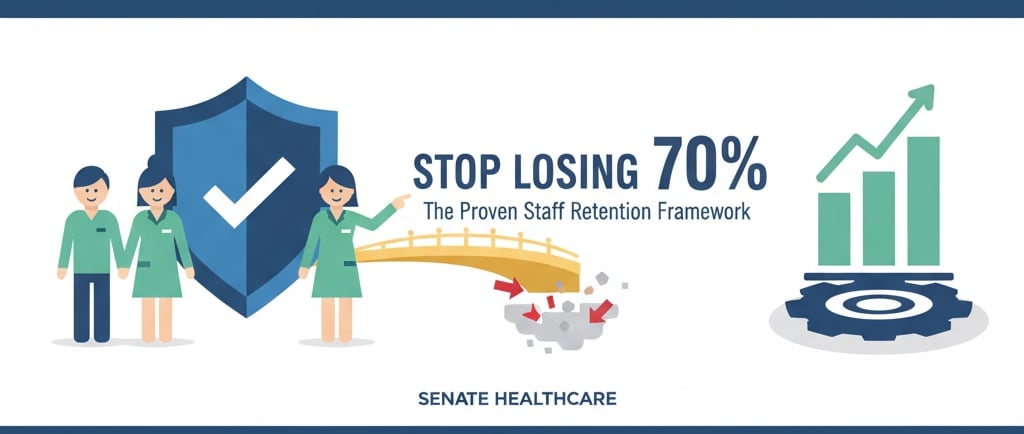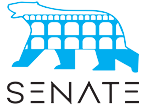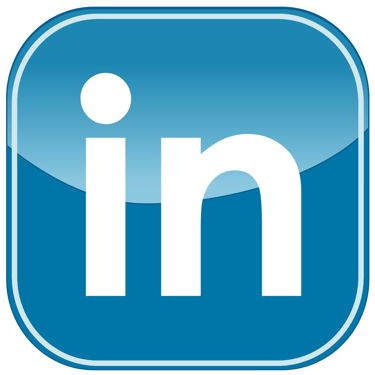Stop Losing 70% of Your Caregivers: The Proven Staff Retention Framework That's Saving Home Care Agencies
Home care agencies are losing up to 70% of their caregivers within the first year, but those implementing proven retention frameworks are successfully reversing this costly trend. This comprehensive guide reveals the four-pillar retention system that's helping agencies build stable, satisfied workforces while reducing turnover costs and improving patient care quality.
10/6/20255 min read


The home care industry faces an unprecedented staffing crisis. With caregiver turnover rates reaching alarming heights, many agencies find themselves trapped in a costly cycle of constant recruitment and training. However, forward-thinking agencies have discovered that implementing a systematic retention framework can dramatically reduce turnover while improving both caregiver satisfaction and patient outcomes.
The cost of losing caregivers extends far beyond recruitment expenses. According to the Bureau of Labor Statistics, the home health industry continues to face significant workforce challenges, with replacement costs averaging $3,000 to $5,000 per caregiver when factoring in recruitment, training, and productivity loss during the transition period.
The Four-Pillar Retention Framework
Pillar 1: Proactive Communication and Support Systems
The foundation of successful caregiver retention lies in consistent, meaningful communication. Agencies that excel in retention maintain regular contact through structured check-in schedules, particularly during the critical first 90 days when most turnover occurs.


Structured Communication Protocol:
Pre-shift outreach before first assignment
Daily check-ins during the first week
Weekly contact throughout the first month
Monthly touchpoints for ongoing support
Effective communication extends beyond scheduled check-ins. Successful agencies implement real-time support systems that allow caregivers to access help when they need it most. This includes providing easy access to shift information, patient care documentation, and immediate manager contact when challenges arise.
Research from the National Association for Home Care & Hospice indicates that caregivers who receive consistent managerial support report 40% higher job satisfaction levels compared to those who feel isolated in their roles.
Pillar 2: Strategic Scheduling and Work-Life Integration
Flexible scheduling represents one of the most powerful retention tools available to home care agencies. When caregivers can align their work schedules with personal commitments, they experience reduced stress and increased job satisfaction.
Smart Scheduling Elements:
Caregiver-controlled availability settings
Shift bidding systems for additional hours
Location-based assignment optimization
Predictable scheduling patterns
Technology plays a crucial role in modern scheduling solutions. Advanced workforce management systems enable agencies to match caregivers with clients based on compatibility factors, geographic proximity, and skill requirements. This data-driven approach reduces travel time, improves caregiver-client relationships, and decreases the likelihood of assignment conflicts.


Pillar 3: Comprehensive Compensation and Benefits Strategy
While competitive wages remain important, innovative agencies are discovering that creative benefit packages can be equally effective in improving retention, especially when budget constraints limit salary increases.
Total Compensation Approach:
Base wage competitiveness analysis
Performance-based incentive programs
Employee referral bonuses
Professional development opportunities
Transportation assistance programs
According to Home Healthcare News, agencies implementing comprehensive benefits packages see 35% lower turnover rates compared to those offering wages alone. The key lies in understanding what individual caregivers value most and tailoring benefits accordingly.
Some agencies have found success with innovative approaches such as float pools that provide scheduling flexibility, job-sharing arrangements that accommodate part-time preferences, and travel voucher programs that help offset transportation costs between client locations.
Pillar 4: Data-Driven Retention Analytics
Modern retention strategies rely heavily on data analytics to identify risk factors before they result in caregiver departures. By monitoring key performance indicators and engagement metrics, agencies can proactively address issues that historically lead to turnover.
Critical Retention Metrics:
Time-to-productivity measurements
Client-caregiver compatibility scores
Shift completion rates and reliability
Training completion and skill development progress


Advanced workforce management platforms enable agencies to track these metrics automatically, generating alerts when caregivers show signs of disengagement or dissatisfaction. This proactive approach allows managers to intervene with targeted support before problems escalate to resignation.
Implementation Strategy and Timeline
Successfully implementing a retention framework requires a phased approach that prioritizes the highest-impact interventions first. The most effective agencies begin with communication and support systems, as these provide immediate benefits and lay the groundwork for other improvements.
Phase 1 (Months 1-2): Communication Foundation
Establish structured check-in protocols
Implement real-time support systems
Train managers in retention-focused communication
Phase 2 (Months 3-4): Scheduling Optimization
Deploy flexible scheduling technology
Train staff on new scheduling processes
Gather caregiver feedback on scheduling preferences
Phase 3 (Months 5-6): Benefits Enhancement
Analyze current compensation competitiveness
Design and launch creative benefits programs
Establish employee referral systems
Phase 4 (Months 7-8): Analytics Integration
Implement retention tracking systems
Train managers on data interpretation
Establish intervention protocols based on analytics


Measuring Success and Continuous Improvement
Effective retention frameworks include regular assessment and refinement processes. Agencies should track both quantitative metrics (turnover rates, time-to-fill positions, training costs) and qualitative indicators (caregiver satisfaction surveys, exit interview insights, client feedback).
The most successful agencies establish retention committees that meet monthly to review data, discuss emerging challenges, and implement program improvements. This collaborative approach ensures that retention strategies evolve with changing workforce needs and industry conditions.
Technology Integration for Scale
As agencies grow, technology becomes essential for maintaining personalized retention efforts across larger workforces. Comprehensive home care software platforms now offer integrated retention management features, including automated communication workflows, predictive analytics, and performance tracking capabilities.
These technological solutions enable agencies to maintain the personal touch that caregivers value while efficiently managing retention programs across hundreds or thousands of team members.
The Strategic Advantage of Superior Retention
Agencies that master caregiver retention gain significant competitive advantages beyond reduced recruitment costs. Stable workforces provide better continuity of care, leading to improved patient outcomes and stronger referral relationships. Additionally, experienced caregivers require less supervision and training, increasing operational efficiency.
From a strategic perspective, strong retention metrics enhance agency value during potential partnerships or acquisitions. Buyers recognize that agencies with stable workforces present lower operational risks and stronger growth potential.
Ready to Transform Your Agency's Retention Strategy?
If you're a home care agency owner struggling with high caregiver turnover or considering your long-term exit strategy, the team at Senate Healthcare can help. Our expertise in home health and hospice transitions means we understand both the operational challenges you face today and the strategic decisions that will shape your agency's future.
Whether you're looking to improve retention to enhance operational performance or preparing for a potential sale or partnership, we provide confidential consultation on strategies that maximize both current efficiency and future value. Contact Senate Healthcare today to discuss how our proven frameworks can help you build a more stable, profitable agency.
Visit us at senatehealthcare.com or explore our insights on workforce solutions and strategic planning for home health agencies.
References:
Unlock Your 30-Minute Agency Succession Review
Maybe you're ready to expand your reach, or perhaps it's time to consider your legacy and the future of your business. Either way, it all begins with a conversation. Schedule a confidential, no-obligation call to explore what the future might hold for you and your business.
Complete the form, and we'll reach out for a chat...


© 2025 SENATE HEALTHCARE LLC.
ALL RIGHTS RESERVED


